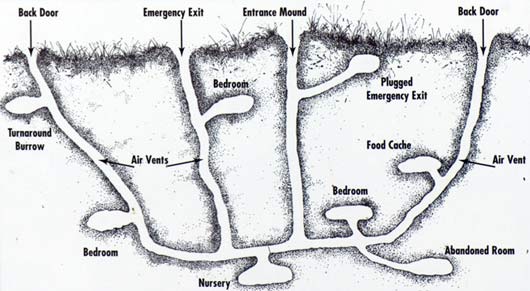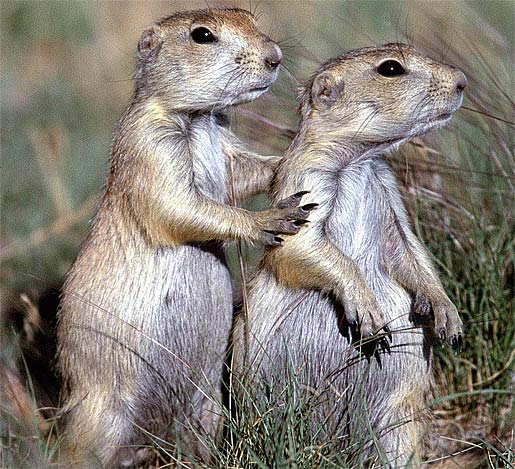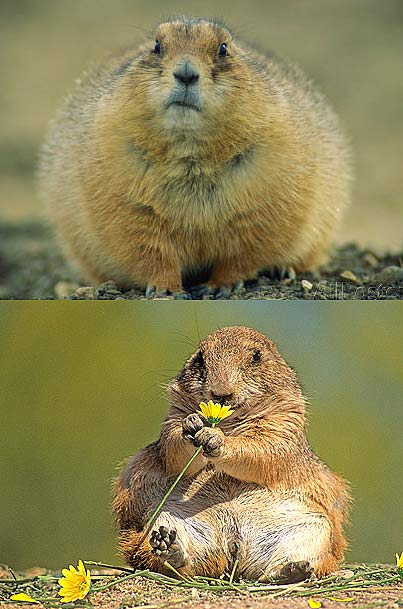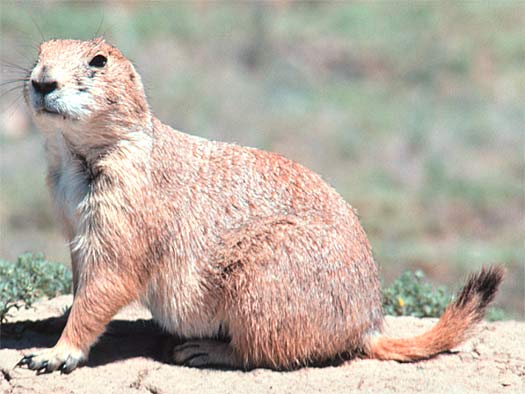Black-tailed Prairie Dog – Good Neighbor, Town Rodent

Black-tailed prairie dogs work together to build a town (sometimes called colony), which they divide into neighborhoods. Neighbors often spend a good deal of time socializing, digging tunnels and visiting with each other and if members of one neighborhood try to move into another, they are driven off. Prairie dog towns can be enormous and one such town in Texas was recorded as being 25,000 square miles (65,000 square kilometers) with as many as 400 million inhabitants.


Young and old dogs greet each other with a “kiss”. But this family custom ceases if a prairie dog senses danger. It barks a warning and dives into its burrow. At the same instant, hundreds of others hearing the call of the alarm vanish underground. The prairie dog’s vocalization being known as, or sounding like, a “bark” is the reason the animal is called a “dog” instead of something more accurate like ground squirrel or some other name for a rodent. The vocalizations utilized by the prairie dogs are quite varied with some scientist believing that there are different “words” (alarm calls) for different predators among other things.

Predators stalk the black-tailed prairie dogs day and night so they have good reason to be wary of any sound or movement in the vicinity. In addition to coyotes, eagles, hawks, big cats and snakes, humans also must be considered enemies, laying traps and leaving poison baits. The foot tall rodent (30 cm) has been under siege from human settlers moving in on their land since people began moving across the North American plains in large numbers. Ranchers have claimed that the rodents eat the grass that cattle do, but in reality prairie dogs eat weeds and much vegetation that cattle don’t eat.

Prairie dogs benefit the ecosystem with their burrow holes and mounds which rejuvenate the soil and provide shelter for other animals such as owls and rabbits. Once the most populous prairie dog of North America, millions of blacktails lived on the Great Plains, excavating subterranean passageways from Saskatchewan to the Rio Grande. Now prairie dogs thrive mainly on protected lands. They spend the winter snug below ground but they are not hibernating, just lying dormant, waiting for good weather, and can come out on warm days to forage for grasses. In spring, litters of three to five young are born and accepted as new members of the neighborhood.

